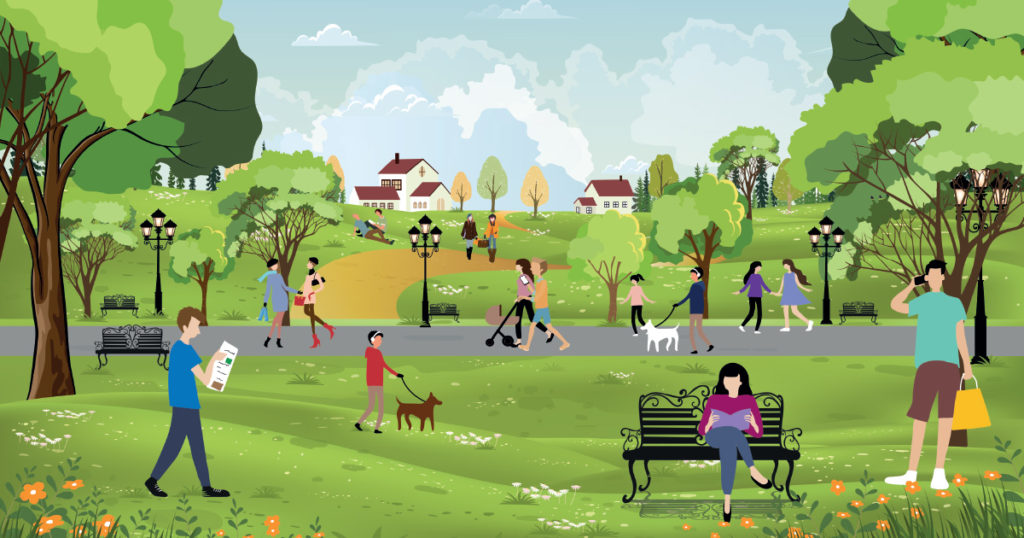
Editor’s Note: Sandy Springs Together periodically publishes letters or comments from community members who raise a concern we feel should be considered by the broader community. Eliza Bruno, the newly elected Valedictorian of the graduating class at Mt. Vernon School and rising freshman at Ga. Tech and her classmate, Kylie Smith-Wolfe, a rising freshman at the School of Nursing at University of Pennsylvania submitted this letter, which offers a well thought out perspective and confirms that there are young people who are involved and who care about our community.
Please let us hear your thoughts.
By Eliza Bruno and Kylie Smith-Wolfe
We attended both the February 10th initial Sandy Springs North End Committee meeting for revitalization, and the open public meeting on March 5th. The Committee was established to generate public input regarding redeveloping and repurposing four shopping centers in the North End.
As teenage residents of Sandy Springs, while we applaud TSW and The City attempting to gather community input, we hope that both data and facts will be used to develop solid policy.
In addition, we are very concerned the City’s community outreach has been skewed and excludes a large portion of Sandy Springs’ citizens. Some of our observations from these two meetings:
- Most of the young working population and families live in apartments. As such, the two major forms of notification of meetings for public input, the Reporter and Neighbor papers, are not received in apartment complexes.
- Email notification through The Sandy Springs Council of Neighborhoods only goes out to members, who must be homeowners.
- Other than accidentally checking the City website, the vast majority of Sandy Springs residents have no idea of the ongoing process that will so deeply affect their future.
- The two public pop-up meetings that have been scheduled for May 2nd at the City Springs Farmers’ Market & the CAC and May 9th at the Northridge Shopping Center have yet to be populated on the official Sandy Spring calendar, though the dates for other events reach into the summer months.
At the March 5th open public meeting, this skew was very obvious in that only 4% of the public represented were North End apartment renters, and 62% were condo or homeowners. Roswell residents, at 3%, were almost as represented as Sandy Springs residents. Conclusions about what the Sandy Springs “community” wants to see in their responses during this meeting are therefore highly biased and, by definition, are not representative of the entire community.
Regarding affordable housing specifically, the committee consists of 13 members selected by the Mayor with a bias toward high end home/business owners. Only one is a renter, despite 53% of the Sandy Springs population being renters. In addition, many of the members expressed a desire for more “high end” single family housing.
When “affordable” workforce housing was discussed, some of the committee members seemed to not understand that the average home price in Sandy Springs is $525,000. If the cost burden of housing is recommended to be no more than 30%, then a two income household, nurse and fireman for instance, can not afford to own a home in Sandy Springs.
Furthermore, the State of Georgia has a program to help public safety workers, nurses and teachers obtain low interest loans in order to live in the communities they serve, but it has a cap at no more than $250,000. This is less than half the average price of a home in Sandy Springs. Both at the committee level, and expressed by many at the open public meeting, was confusion about what exactly “affordable” housing means.
As we see it, affordable means maintaining economic diversity and mobility, resources we currently are rapidly losing, near excellent job sources, a resource that we may lose as our work force moves away.
Many times, an increased “high end” retail presence was suggested. In the Sandy Springs area, we are surrounded by 3 Class A malls and large retail presences in any new development.
Because of high rents, many of the retail and restaurant chains are expensive, generic and often half empty. Some of these retail areas are now struggling, as the consumer has moved on to the next latest and greatest retail meca.
As teenagers, we would love to see unique, family run businesses and restaurants that would be pleasant spaces for us to get summer jobs and meet up with friends. As future business owners, we would like to remain in Sandy Springs, but the issues revolving around small business promotion need to be on the table.
Finally, regarding promoting “community,” many agreed that walkability and connecting both green spaces to work and play environments was very important.
Exactly where these spaces exist and what new specific types of spaces there would be has not been well developed.
One proposal was for more parks, but some members of the committee were not aware of the immense amount of green space that already exists in Sandy Springs. More specifically a committee member called for a potential park in the North River Village, which is located directly across the river from Riverside Park.
As we see it, the issue is not a lack of parks, it’s the lack of connectivity and community development that takes place within those spaces. The correct causes of issues must be determined to genuinely fix them.
At the Feb. 10 committee meeting, it wasn’t until after a few members had suggested that more large-scale park-like areas be added to each of the four shopping center development sites that one committee member remembered and mentioned the Chattahoochee River National Park. Rather than spending money on larger amounts of green space, community space should be put in place for every member of the community. This includes the young and old, as well as higher-income and lower-income families.
As young people in this community, we have very few opportunities to engage with our neighbors; the majority of our friends must be found through activities like school and church. It was relieving to hear about the potential for a YMCA-Esque family recreation center to be added to one of the four locations. Our thoughts on this are:
- The only YMCA in the area is currently way over capacity, and located on Ashford Dunwoody Rd, between the Kroger and the Marist School.
- Not only would an additional YMCA facility allow for more people to have memberships and provide a space for further community building, but it would include and bring in lower-income families around the area.
- Access to sports facilities and sports education is vital in the development and growth of a healthy lifestyle for community members of all ages.
- Creating an affordable way to engage in daily/weekly/monthly physical activity, and be a part of a diverse space at the same time, is also crucial when it comes to developing the surrounding community in the same way, to flourish with culture.
In the future, we hope to have the opportunity to continue to live, work, and grow in the Sandy Springs community. This will only be possible if we address specific problems, develop sound policy, and include all members of our community in the process.
Sincerely,
Eliza Bruno and Kylie Smith-Wolfe


